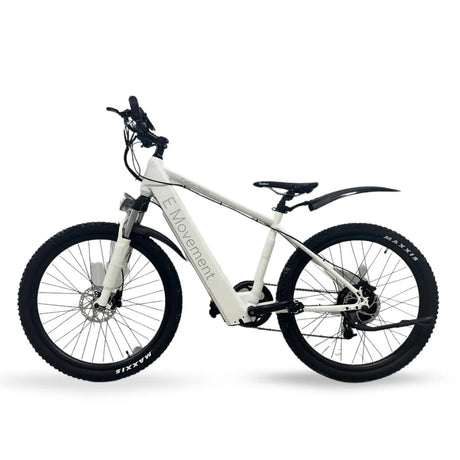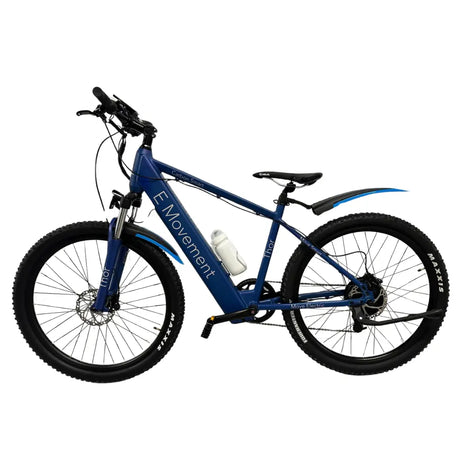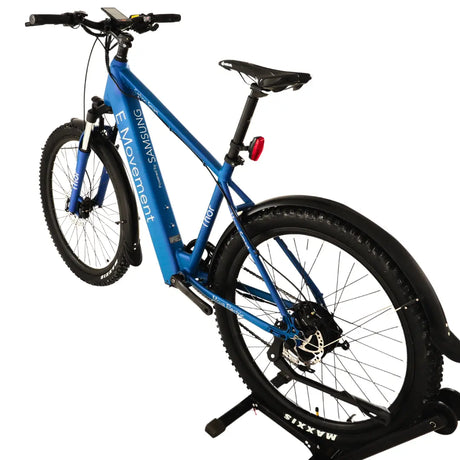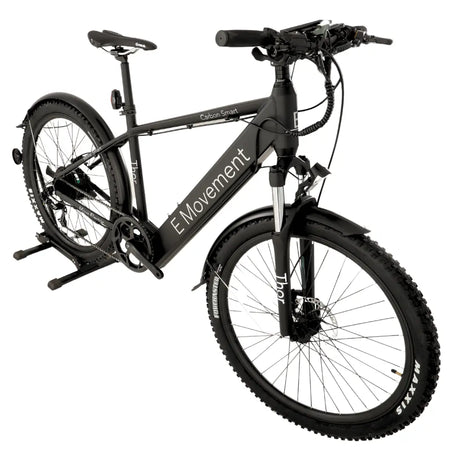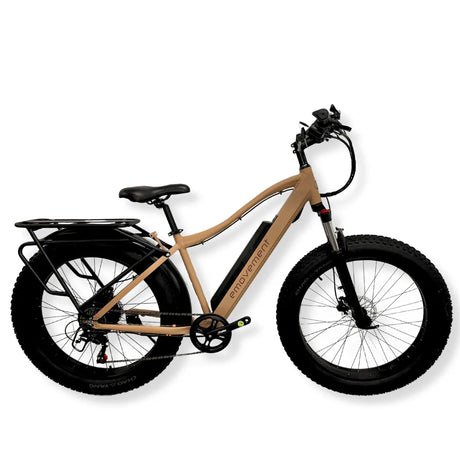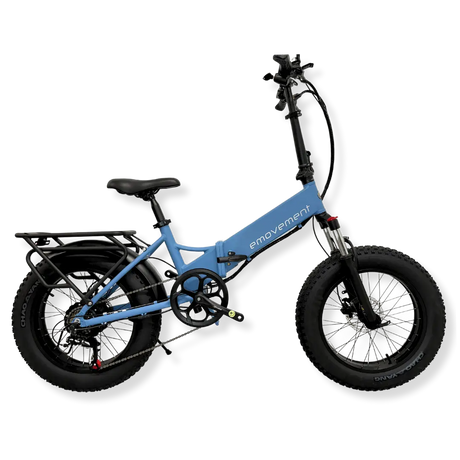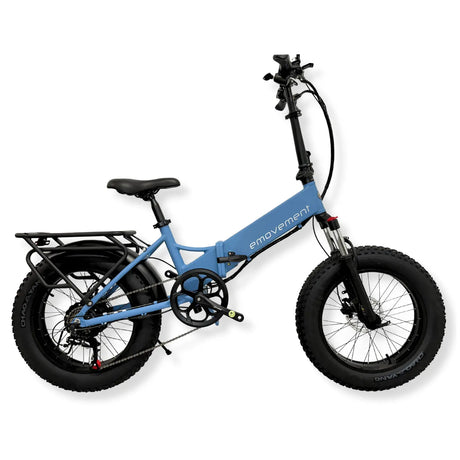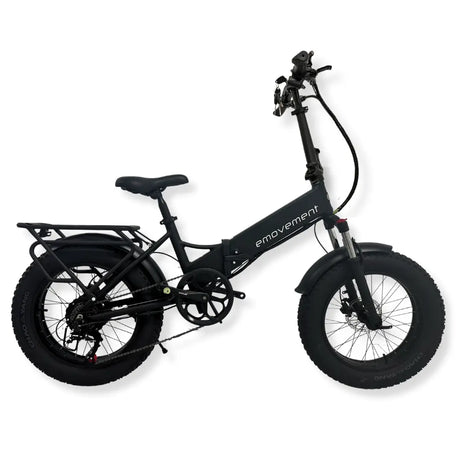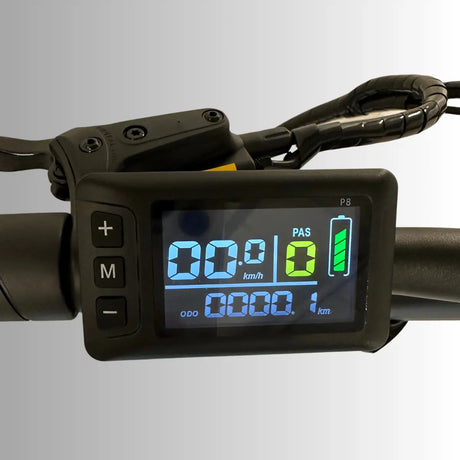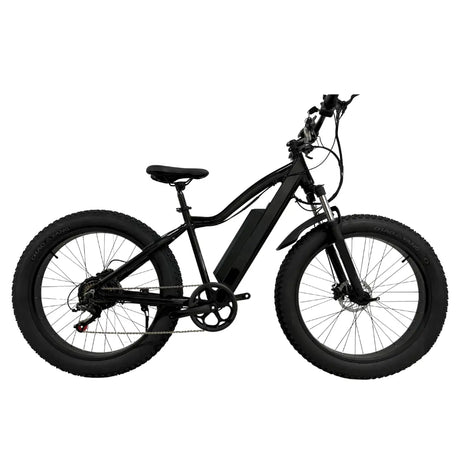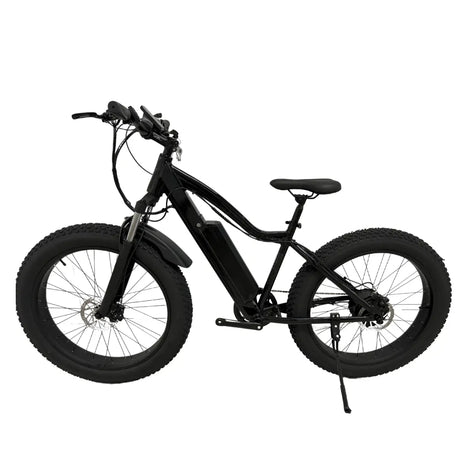The need for alternative transportation options has become evident as the world grapples with declining health and a deteriorating environment. Here, electric bikes – electric bicycles, e-bikes, or pedelecs – have become an increasingly popular choice for commuters, fitness enthusiasts, and leisure riders. Combining the convenience and efficiency of a traditional bicycle with the added power and assistance of an electric motor, electric bikes offer a unique blend of mobility, versatility, and eco-friendliness. However, high price tags and ongoing maintenance requirements can raise one question: are e-bikes worth the money?
In this article, we will explore various aspects of the best electric bikes, their benefits, drawbacks, and long-term considerations associated with e-bike ownership to provide a comprehensive analysis for you if you’re wondering, ‘Is an e-bike worth it?’
E-Bike Basics: Cycles with Motors and Batteries for Pedal Assistance
Before proceeding further, let’s discuss the basics of electric bikes and how they are superior to traditional cycles.
While regular bicycles require manual effort to pedal, pedelecs feature an electric motor offering assistance. The amount of electrical assistance provided can be adjusted when riding the e-bike through the pedal assist settings, so you can determine how much you want to pedal and the help required to propel you forward.
In technical terms, e-bikes make pedalling easier through a cadence or a torque sensor. A cadence sensor measures your pedalling speed, and the motor provides assistance based on this speed. In contrast, torque sensors calculate the force you apply to the pedals, and the motor assists you accordingly.
With an electric bike, gone are the days when you had to struggle while cycling longer distances or navigating off-road trails. Sure, climbing hills on a normal bike is challenging, but with an e-bike, you don’t need to put in much effort; let your e-bike do the hard work. You can also make longer bike trips without getting tired. This has helped make biking more inclusive – individuals with all kinds of stamina levels and physical capabilities can opt for cycling using e-bikes.
E-Bikes vs Regular Bicycles: Which is Better?
When choosing an e-bike, the decision often boils down to the classic debate of the electric bike vs. the normal bike. Yes, regular cycling is incredible for health and is even more beneficial for the environment than electric bikes. However, it’s crucial to remember that not everyone can pedal manually for kilometres on end. Consequently, the traditional cycling solution is not inclusive.
Both options offer unique advantages and cater to different needs and preferences. Regular bikes have been around for centuries and are loved for their simplicity, reliability, and the physical exertion they require. On the other hand, e-bikes like step-through ones have gained popularity in recent years due to their electric assistance, providing riders with an extra boost and making biking more accessible to a wider range of people.
Let’s compare e-bikes with traditional bikes in detail:
1. Speed and Efficiency
A conventional bike relies solely on human power, requiring riders to pedal to generate speed. The speed achieved depends on the rider’s fitness level and strength, typically ranging from 10 to 20 mph (16 to 32 km/h) on flat terrain. While traditional bikes offer a good workout, they might not be ideal for longer distances or hilly terrains.:
In contrast, electric bikes with their motors provide an added advantage in speed and efficiency. The electric assistance allows riders to maintain higher speeds with less effort, especially on inclines. Depending on the e-bike’s power and assist modes, riders can reach up to 20 to 28 mph (32 to 45 km/h) or even higher. This makes e-bikes particularly useful for commuting or covering longer distances with ease.
Winner: E-bikes because of their ability to maintain higher speeds and cover longer distances with less physical exertion.
2. Physical Fitness and Exercise
Riding a regular bike requires the rider to exert physical effort and engage various muscle groups, providing an excellent cardiovascular workout. And regular cycling can help you improve stamina, build muscle strength, and contribute to weight management.
In contrast, riding an e-bike is not effort-intensive.
While e-bikes provide pedal assist, they still require some effort from the rider. You can adjust the level of physical exertion by selecting different assist modes, allowing you to choose between a more relaxed ride or a higher-intensity workout. So, electric bikes can be an excellent option for individuals starting their fitness journey or with physical limitations that make traditional cycling challenging. You can opt for E-Movement’s Hunter Extreme or Pixie if you have mobility issues, as they cater to all riders.
Winner: It’s a tie here. Whereas regular cycles undoubtedly give more calorie-burning workouts, they are not flexible. With e-bikes, you can choose how much effort you want, allowing for fully manual to less effort-intensive workouts. This allows more individuals to opt for exercise through cycling, and one can’t overlook this benefit.
3. Commuting and Practicality
A normal bike is well-suited for short to medium distances, making it an eco-friendly and cost-effective option for daily commuting. They manoeuvre easily, can navigate traffic, and need minimal maintenance. However, longer commutes or hilly terrain may pose challenges for some riders.
Electric bicycles, on the other hand, are practical and convenient, explaining their growing popularity as an alternative mode of transportation for commuting. With their electric assistance, e-bikes make it easier to cover longer distances, conquer steep hills, and arrive at your destination without sweat. They offer convenience, especially for riders who prefer not to arrive at their destination exhausted or need to shower and change clothes.
Winner: electric bikes, for their practicality and ability to make commuting more accessible and enjoyable.
4. Cost and Maintenance
An answer to one of the most asked questions: How much are electric bikes? Conventional bikes are generally more affordable than e-bikes. They are available in multiple options to fit different budgets. They also tend to require less maintenance since they have fewer complex components. Routine maintenance includes checking tire pressure, lubricating the chain, and occasional brake adjustments.
In contrast, electric bikes are typically more expensive due to the added electric components, such as the motor and battery. Additionally, e-bikes may require occasional maintenance of the electrical system.
However, it’s pertinent to note that the cost race isn’t between e-bikes and regular cycles: it’s between e-bikes, public transport, and cars. And the cost of charging an e-bike is significantly lower than fuel expenses for other forms of transportation.
Winner: Regular bikes, for their lower upfront cost and simpler maintenance requirements.
Why the Sudden Popularity of Electric Bicycles
So, why are electric bikes worth it? Their popularity among cyclists has been increasing in recent years, and this demand is a result of numerous factors, like the increased practicality, enhanced inclusivity, and sheer convenience. You don’t have to get into 20-minute pit-stops just to get to that grocery store that takes 15 minutes of cycling!
In the end, people are just looking for convenient and easy ways to get around town, especially in cities with traffic congestion. In that case, e-bikes are their best bet. They’re perfect for carrying heavy groceries or mountain biking in hilly areas or rougher terrains.
E-Bikes can be used in cities where cycling isn’t possible due to longer distances or steep inclines. It would be challenging to bike up steeper hills with a regular or a mountain bike. You can also use them for longer trips or commuting in areas with heavy traffic.
More and more people are becoming aware of the negative effects of using cars and other gas-powered vehicles. Electric bikes are a great way to reduce your carbon footprint since their mechanism works on an electric motor.
Many governments, such as the UK, offer incentives (such as the Cycle to Work scheme), which provide tax breaks for electric bicycles. These bikes are also part of a larger trend towards micro-mobility, encouraging small, lightweight, and sustainable transportation options.
Let’s look at the benefits of electric bikes to understand their worth.
A: Environmental Benefits of E-Bikes
Electric bikes offer a promising solution for sustainable transportation, reducing emissions, improving air quality, and promoting healthier and more livable communities.
Reduced Emissions
Ebikes produce little to no tailpipe emissions of carbon monoxide, nitrogen oxides, and particulate matter that contribute to air pollution and respiratory problems. So, by choosing them over cars or motorcycles, you can help improve local air quality and reduce your carbon footprint.
Lower Greenhouse Gas Emissions
Electric bikes have the potential to significantly reduce greenhouse gas emissions, depending on the source of electricity used to charge their batteries. The e-bikes’ carbon footprint is substantially lower if the electricity comes from renewable sources. Even when powered by electricity from fossil fuel-based power plants, electric bikes still have lower emissions due to their energy efficiency.
Energy Efficiency
Electric bikes are more energy-efficient than internal combustion engine vehicles. The electric motors in e-bikes convert a higher percentage of the energy from the battery into mechanical energy, resulting in less energy waste. In contrast, traditional vehicles lose a significant amount of energy through heat dissipation, transmission losses, and idling in jams. The energy efficiency of e-bikes contributes to their reduced environmental impact.
Congestion Reduction
Electric bicycles can help alleviate traffic congestion, especially in urban areas. By choosing e-bikes for short-distance commuting or errands, individuals can reduce the number of cars on the road. Reduction in traffic congestion leads to time savings and helps lower fuel consumption, emissions, and noise pollution associated with stop-and-go traffic.
Sustainable Mobility
Electric bikes promote sustainable mobility by offering an alternative to car travel for short to medium distances. Many car trips, particularly those within urban areas, are relatively short and can be easily replaced by e-bike journeys.
Noise Reduction:
Electric bicycles, like cycles, generate little to no noise compared to motorcycles and cars. The quiet operation of e-bikes reduces noise pollution, creating more pleasant and peaceful urban environments. This contributes to improved quality of life, especially in densely populated areas.
Land Use Efficiency:
Electric bikes require less parking space than cars, which can help optimise parking lanes. By promoting their use, cities can reduce the need for large parking lots and dedicate more space to green areas, cycling infrastructure, and pedestrian zones. This can enhance urban livability, improve aesthetics, and promote a healthier environment.
B. The Health and Fitness Benefits of E-Bikes
Electric biking has physical and mental health benefits. The level of physical exertion during electric bike riding can be adjusted based on personal preference and fitness goals. Individuals can pedal more or rely more on electric assistance, allowing for a customised and enjoyable exercise experience. This flexibility alone makes them better than cycles and cars, as people can choose the level of effort they want to exert.
You can get in a good workout by riding an electric bike if you want to stay active but don’t have the stamina or physical ability to use a standard bike. As for cyclists using an electric bike for work? You’ll notice that you can get to the office faster, saving a significant amount of time on commuting without dripping in sweat on the road (many offices don’t have showers, do they?)
To get the most benefits from using e-bikes, set realistic fitness goals, vary your routes, incorporate inclines, wear comfortable clothing, and most importantly, listen to your body! If you are feeling pain, stop and rest. Do not push yourself beyond what your body can handle.
Here’s what benefits you’ll unlock by opting for e-biking:
Enhanced Physical Activity and Reduced Sedentary Behaviour
One thing that e-bikes do right is encourage individuals to incorporate more physical activity into their daily routines. Commuting to work or running errands on an electric bike provides an opportunity to include exercise in daily life without requiring extra time for dedicated workouts. If you have a busy schedule and find it challenging to fit exercise into your day, we recommend purchasing an electric bike.
Although e-bikes provide pedal assist to prevent too much work while cycling, most riders still engage in physical activity. Pedalling an electric bike results in exercise for the legs, thighs, and core muscles, contributing to cardiovascular fitness and overall stamina. The amount of effort exerted depends on individual fitness levels and desired intensity.
So, electric bikes can help combat sedentary behaviour linked to an increased risk of various diseases, including obesity, cardiovascular disease, and certain types of cancer. Pedelecs encourage individuals to be more active in their daily lives by providing an enjoyable and convenient means of transportation. Substituting car or public transportation trips with e-bike rides increases physical activity levels and reduces prolonged sitting, contributing to a healthier lifestyle.
Cardiovascular Health
E-bike riding involves moderate-intensity aerobic exercise, which helps improve cardiovascular health. It strengthens the heart muscle, improves blood circulation, and lowers the risk of heart disease, stroke, and high blood pressure.
Electric bikes also offer an advantage for individuals with physical limitations or difficulty with traditional cycling, as the electric motor can assist pedalling.
Weight Management and Diabetes Prevention
Regular e-bike riding can help lose weight and prevent or manage type 2 diabetes. Cycling burns calories, boosts metabolism, and promotes weight loss. Incorporating electric bike rides into daily routines can increase your overall physical activity level and improve insulin sensitivity, reducing your risk of developing diabetes.
Joint and Bone Health
E-bikes offer a low-impact form of exercise that is gentle on the joints.
Unlike high-impact activities like running, which strain the joints, cycling provides a smooth and non-weight-bearing exercise option; electric pedal-assisted cycling is even more gentle. This makes e-bikes suitable for individuals with joint conditions or those looking for a low-impact exercise alternative, like people recovering from injuries or dealing with conditions such as arthritis.
Regular cycling can also help improve bone density and reduce the risk of osteoporosis and fractures.
Mental Well-being and Stress Management
E-bike riding has positive effects on mental health and overall well-being. Engaging in physical activity outdoors, such as riding through scenic routes or nature trails, can reduce stress, improve mood, and enhance cognitive function. Regular exercise stimulates the release of endorphins, which are natural mood enhancers. Bike riding also offers social interaction, whether riding with friends, joining group rides, or participating in community cycling events.
Riding your electric bike can help reduce stress levels and improve your mental health. Since the activity releases endorphins, hormones with mood-boosting effects, you will feel relaxed and happy while riding your e-bike. Most riders also notice an increased energy level and improved muscle strength!
Respiratory Health
Electric bikes can contribute to better respiratory health by reducing exposure to air pollution. Unlike motor vehicles that emit pollutants, e-bikes produce no tailpipe emissions. By choosing such micro-mobility solutions for commuting or short trips, individuals can reduce their exposure to harmful impurities and improve their respiratory function. This is particularly beneficial for people who suffer from asthma or chronic obstructive pulmonary disease (COPD).
Increased Fitness Levels
Regular use of an electric bike can lead to improved fitness levels over time. Riding an electric bike means strong muscle development, increased flexibility and improved coordination. It can also enhance cardiovascular endurance and lung capacity.
C. Commuting and Transportation
Is an electric bike worth it? Here are some good reasons.
Speed and Efficiency
Calling all riders who want to travel faster and cover longer distances with less exertion! An electric bike’s motor assists in pedalling, enabling riders to reach higher speeds than conventional bicycles. This makes them an efficient and time-saving option, especially for longer commutes or when facing hilly terrain.
Reduced Effort and Sweat
With the electric motor assistance, e-bikes significantly reduce the physical effort required to pedal. Commuters who don’t want to arrive at their destination sweaty or exhausted can achieve this by riding a pedelec. The pedal-assist feature enables riders to maintain a comfortable pace, arrive fresh, and easily transition into work or other activities.
Flexibility and Accessibility
If you’re looking for flexible commuting options, look no further than electric bicycles. They can be used for short and long distances, and riders may adjust the assistance level based on how tired they are or their desired exercise intensity. E-bikes also provide accessibility to individuals with physical limitations or who find it challenging to ride traditional bicycles over long distances with step-through frames or adjustable seats.
Cost Savings
Electric bikes are incredibly cost-effective when compared to other forms of transport. Since there are fewer moving parts and no fuel requirement, they have lower maintenance costs than cars or motorcycles. Charging an e-bike’s battery is generally more affordable than fueling a vehicle. E-bikes also eliminate the need for parking fees or public transportation expenses, resulting in potential long-term savings.
Convenient Traffic and Parking
Pedelecs can bypass traffic congestion and provide a quicker commute, especially in urban areas. They offer the flexibility to use bike lanes, paths, or alternative routes inaccessible to cars. These bikes require less parking space, so you won’t have to look for one for hours.
Additionally, finding parking in crowded urban areas can be time-consuming and stressful. E-bike commuters can take advantage of bicycle racks or dedicated parking spaces, allowing them to park conveniently and quickly. This eliminates the need to search for parking, saving time and reducing frustration.
Helps Avoid Public Transportation Delays
Gone are the days when you relied on public transportation schedules if you opt for an electric bike. Delays, crowded trains or buses, and waiting times can add up and prolong the overall commute. E-bikes allow commuters more control over their travel time, as they are not dependent on any timetable. This can result in significant time savings, especially for shorter distances.
Seamless Door-to-Door Travel
E-bikes offer seamless door-to-door travel. Commuters can ride directly from their homes to their workplaces or other destinations without transferring between different transportation modes. You’ll spend less time waiting for connections or walking to and from public transportation stops. Electric bikes provide a convenient and time-efficient solution for commuting, making the entire journey more streamlined.
Enjoyment and Freedom
E-bike commuting can be an enjoyable and liberating experience. It allows riders to connect with their surroundings, explore the city streets, enjoy fresh air, and indulge in the joy of cycling.
D. Cost Efficiency
Another major advantage of electric bikes is how they help save costs:
Initial Cost
Electric bikes typically have a higher upfront cost than traditional bicycles. The price can vary depending on the brand, model, and features. However, this investment will reap you long-term rewards.
Fuel Savings
E-bikes don’t require gasoline or other fossil fuels; they rely on rechargeable batteries that produce sustainable power, increasing cost savings. Electric bikes can be charged using standard household electricity, which is more affordable than gasoline.
Maintenance
You don’t have to worry about high maintenance costs with e-bikes. Compared to internal combustion engine vehicles, they have fewer moving parts and don’t require oil changes or complex engine maintenance. However, you should know that routine maintenance such as brake adjustments, tire replacements, and battery maintenance may still be necessary. Overall, the maintenance costs for electric bikes are typically lower than those for cars or motorcycles.
Insurance and Registration
Unlike other vehicles, pedelecs don’t require insurance or registration in several regions. This saves owners from additional expenses related to insurance premiums and registration fees.
Commuting Costs
Electric bikes can be a cost-effective alternative for commuting. They consume minimal electricity compared to electric cars and require less parking space. You’ll also be able to save money on public transportation and fuel costs for shorter daily commutes.
Costs Saved by Staying Healthy
More cycling means better health and fewer trips to your physician. You save tremendously in the long run.
E. Accessibility and Inclusivity
It’s worth noting that e-bikes still require physical ability and balance to operate safely. However, the electric assistance provided by e-bikes expands the possibilities and accessibility of cycling, allowing more people to experience active transportation while enjoying the freedom and joy of riding a bike:
Reduced Physical Effort
Since e-bikes provide pedal assistance, they make cycling more accessible to individuals with varying fitness levels or physical abilities. People who may struggle with the physical demands of riding a traditional bicycle, such as those with mobility limitations, joint problems, or certain health conditions, can still enjoy the benefits of cycling with this assistance.
Increased Range and Freedom
The electric motor assistance in pedelecs extends the range to travel comfortably without exhaustion. This increased range can be especially great for individuals with limited stamina, enabling them to explore and commute longer distances than they would on a regular bicycle. Individuals who may have otherwise been restricted in their mobility can be empowered to experience the freedom and independence of cycling.
Uphill Assistance
You can tackle uphill climbs using an e-bike without missing a beat. The motor assists in overcoming steep inclines, reducing the physical strain on riders. Uphill assistance makes e-bikes accessible to a wider range of individuals, allowing them to navigate mountainous terrains and enjoy cycling in areas that may otherwise have been challenging.
Alternative to Driving
Electric bicycles provide an accessible alternative to driving, particularly for individuals who may not have a driver’s license or access to a car. This includes teenagers, seniors, individuals with disabilities, etc. They offer an independent and sustainable mode of transportation for everyone above 14.
Inclusive Commuting
With an e-bike, riders can navigate traffic and crowded urban areas more easily, reducing barriers faced by individuals with mobility challenges. If you live in an area with limited or inconvenient public transportation options, these bikes will ensure an accessible and reliable means of commuting.
Social and Community Integration
The benefits of electric bikes also extend to social and community integration, enabling individuals to participate in group rides or cycling events. Since they promote inclusivity within cycling communities, people of different abilities can ride their bikes together and enjoy shared experiences. E-bikes can help bridge gaps and establish a sense of belonging for those who may have felt excluded from cycling activities due to physical limitations.
The Limitations of Electric Bikes
While electric bikes (e-bikes) offer numerous benefits, it’s important to consider their limitations to understand their true value.
Here’s what to keep in mind:
Range and Battery Life
E-bikes have a limited range, depending on factors like battery capacity, terrain, rider weight, assistance level used, and riding conditions. The battery life determines how far you can travel on a single charge. While advancements in battery technology have increased the range, long-distance or continuous rides may require additional charging or carrying spare batteries.
Of course, you can just manually pedal, so your e-bike won’t be a dead weight to lug around, even at no charge.
Charging Time
Charging an e-bike’s battery takes time, typically several hours. This can be inconvenient if you need to charge during the day or when you’re away from a power source. Planning your rides and ensuring the battery is adequately charged becomes essential for longer commutes or rides.
Weight
Yes, pedelecs can be heavy, with an average weight of 20- 27 kg. The battery size, motor type, and frame material typically contribute to this weight. So, manoeuvring at slow speeds or lifting the bike for storage or transportation can be a struggle. The weight can also affect the riding experience, especially if you need to ride the e-bike without electric assistance.
Cost
There’s no doubt that e-bikes are more expensive than standard bikes. This cost is primarily due to the motor, controller, battery, and associated components. Although electric bicycle costs are decreasing, there’s still a long way to go before the price is on par with a standard bike.
That said, it’s a one-time investment that gets you far. And they’re considerably cheaper than cars with their refills or public transport with its tickets and delays.
Maintenance and Repairs
Electric bikes require regular maintenance and occasional repairs like any other mechanical device. As e-bikes are more complex than normal bicycles, there is a higher chance of encountering problems. And while they generally have lower maintenance costs than internal combustion engine vehicles, unique components such as motors, batteries, and electronic systems may need specialised servicing. Repairs or replacements of these components can add to the overall cost of owning an electric bike.
Regulatory Considerations
Different regions and jurisdictions have regulations and restrictions related to e-bikes. These regulations may include speed limits, power limitations, age restrictions, and requirements for licenses or registration. Comply with local e-bike regulations to ensure legal and safe bike use.
Limited Accessibility for Certain Terrains
While e-bikes can handle a variety of terrains, there may be limitations when it comes to extremely steep or challenging off-road trails. They may not have the same level of performance or durability as specialised mountain bikes or other off-road bicycles. Riders looking for intense off-road adventures may need to consider purpose-built bicycles for those terrains.
Dependency on Electricity
The basic mechanism behind your electric bicycle is electricity. Charging the battery requires access to a power source, which may not always be readily available in remote areas or during outdoor adventures. In such cases, the e-bike may need to be operated as a normal bicycle without electric assistance, impacting the overall riding experience.
Safety Concerns
Electric bikes have a set of safety concerns as well:
Speed and Acceleration
E-bikes can achieve higher speeds and faster acceleration compared to conventional bicycles. This can pose challenges, particularly for riders untrained for higher velocities.
You must familiarise yourself with the bike’s power settings and gradually increase speed as you gain confidence and experience.
Braking Distance
An e-bike’s braking distance may be longer than a bicycle's, as it has a higher speed. So, you should maintain a safe following distance from other vehicles or cyclists to allow ample time to stop or manoeuvre in case of unexpected situations. Choose bikes with hydraulic disc brakes instead of mechanical brakes for the best experience.
Handling and Manoeuvrability
The added weight of e-bike components, such as the motor and battery, can affect the bike’s handling characteristics. You should practice manoeuvring and become comfortable with the bike’s balance and stability. Adjust your riding techniques when making turns for a smooth ride.
Battery Safety
E-bike batteries are generally safe when handled properly. Follow the manufacturer’s instructions for charging, storing, and handling the battery. Use the charger specifically designed for your e-bike and avoid overcharging or exposing the battery to extreme temperatures or moisture.
Verdict: Are e-bikes Worth Investing in?
Whether an e-bike is worth it depends on your needs and circumstances. In our eyes, they are worth investing in due to their potential in redefining micro-mobility. An e-bike is a great way to exercise without making it too hard. They also help you save money on transportation, as travelling by car is getting expensive. They’re cheaper and easier to operate than a car or motorcycle. Electric bikes also produce zero emissions (making them a popular eco-friendly option), so using an e-bike also has environmental benefits. If you sign up for the Cycle to Work scheme in the UK, you can also enjoy lower costs and tax breaks. All in all, an e-bike is also exciting and fun to ride!
While the advantages of electric bikes are evident, it is equally important to consider potential challenges. Factors such as initial costs, ongoing maintenance, range limitations, and battery life are key considerations for prospective e-bike owners.
Whether an e-bike is worth it depends on various factors, including personal preferences, lifestyle, commuting needs, and budget constraints. But if you’ve decided you want to explore this ingenious mode of commute, you can explore our collection!
Frequently Asked Questions (FAQS)
How long does it take to charge an electric bike?
The time it takes to charge an e-bike depends on various factors, including battery size, type of charger, its condition, and temperature.
Generally, most e-bike batteries charge in 3-6 hours. Some batteries may charge in as little as 2 hours, and others may take up to 8 hours.
To extend the battery life of your e-bike, you can follow the following tips:
- Avoid deep discharges (when the battery is drained to a very low level).
- Even if you are not using your e-bike, charge your battery every few weeks.
- Store the battery in a cool, dry place. Heat and humidity can damage it.
- Do not use or replace your battery if it is damaged.
Are electric bikes faster than regular bicycles?
Yes, electric bikes are faster than conventional bikes. The speed of an electric bike depends on the motor, the battery, and your weight. E-bikes tend to reach up to 20 mph or more, so you can cover long distances faster. What is guaranteed is that you can ride faster on an electric bike than on a normal bike and with less effort.
Are e-bikes suitable for hilly terrains?
An electric motor helps with easier cycling. So riding your e-bike in cities with steep hills like Bristol and Sheffield in the UK will save you a lot of trouble. While biking up steep hills with a regular mountain bike, electric bikes will make your off-road adventures a breeze. You can also use an electric bike for longer trips or commuting in areas with heavy traffic.
What is the average lifespan of an e-bike battery?
The charging time for an e-bike battery depends on the battery size and the type of charger you use. Typically, this battery can be fully recharged in 3-4 hours.
An e-bike’s battery life decreases over time as its capacity depletes. Still, you can extend the battery life of your e-bike by following simple tips, such as basic maintenance, avoiding deep discharges and charging your battery every few weeks.
How much does an e-bike typically weigh?
The average weight of an e-bike is 20-30 kg. The battery size, motor type, and frame material contribute to this weight. You can pick an electric bike with a mid-drive motor since it is more efficient. This means they can produce more power without adding as much weight to the e-bike.
You can also opt for an e-bike with a lightweight frame made of carbon fibre or aluminium to reduce the e-bike’s overall weight.
How fast can e-bikes go?
The speed of an electric bike depends on the motor, the battery, and your weight. E-bikes tend to reach up to 25 kph or more, so you can cover long distances faster. What is guaranteed is that you can ride faster on an electric bike than on traditional bikes and with less effort. However, remember that e-bikes with a motor rating greater than 250w must be licensed, taxed, and registered.
How does the assistance level of e-bikes work?
E-bikes don’t need a throttle to control the motor, it activates when you pedal and enables you to go faster without effort. There are two kinds of pedal sensors: cadence and torque sensors, each working differently and providing its own pedalling experience.
Are e-bikes suitable for all ages?
In the UK, you can ride an electrically assisted pedal cycle (EAPC) if you’re 14 or older. EAPCS don’t need to be inspired, taxed, or registered. However, anyone who opts for an e-bike with a motor power greater than 250w cannot ride it everywhere and will require insurance and registration.
Are e-bikes suitable for daily commuting?
When it comes to your daily commute, pedelecs are the perfect choice. Whether you want to head out with friends, ride to work, or run errands, commuting and folding e-bikes reduce commuting time. They also give you that extra boost required to maintain your speed on the road.
Can e-bikes be used for exercise purposes?
Electric bikes are an excellent low-impact exercise that is easier on the joints. You can choose not to use the pedal assistance option and pedal yourself to stay fit or lose that extra weight. Moreover, improve your cardiovascular system by increasing your heart and breathing rate with an e-bike.
How to ride an electric bike
Here are some tips to help you get started with using your electric bike:
- Read the owner’s manual. Learn about the different features and controls, and familiarise yourself with the structure of the electric bike and where the brakes, throttle, etc., are located.
- Start riding in a safe area for a test ride. Make sure there is no traffic around or pedestrians on your first trip. This will help you enjoy your electric bike and its controls.
- After getting comfortable with the controls, begin riding without pedal assist. You’ll be able to get a feel of how the electric motor works.
- Once you’re comfortable riding without pedal assist, you can start adding the pedal assist. You’ll be able to enjoy a boost of power and go faster.
- Use the brakes properly. The brake on the front wheel is the most powerful, so be very careful with it.
As with any other bicycle, be aware of your surroundings while riding. And most importantly, enjoy the ride and the fresh air!


